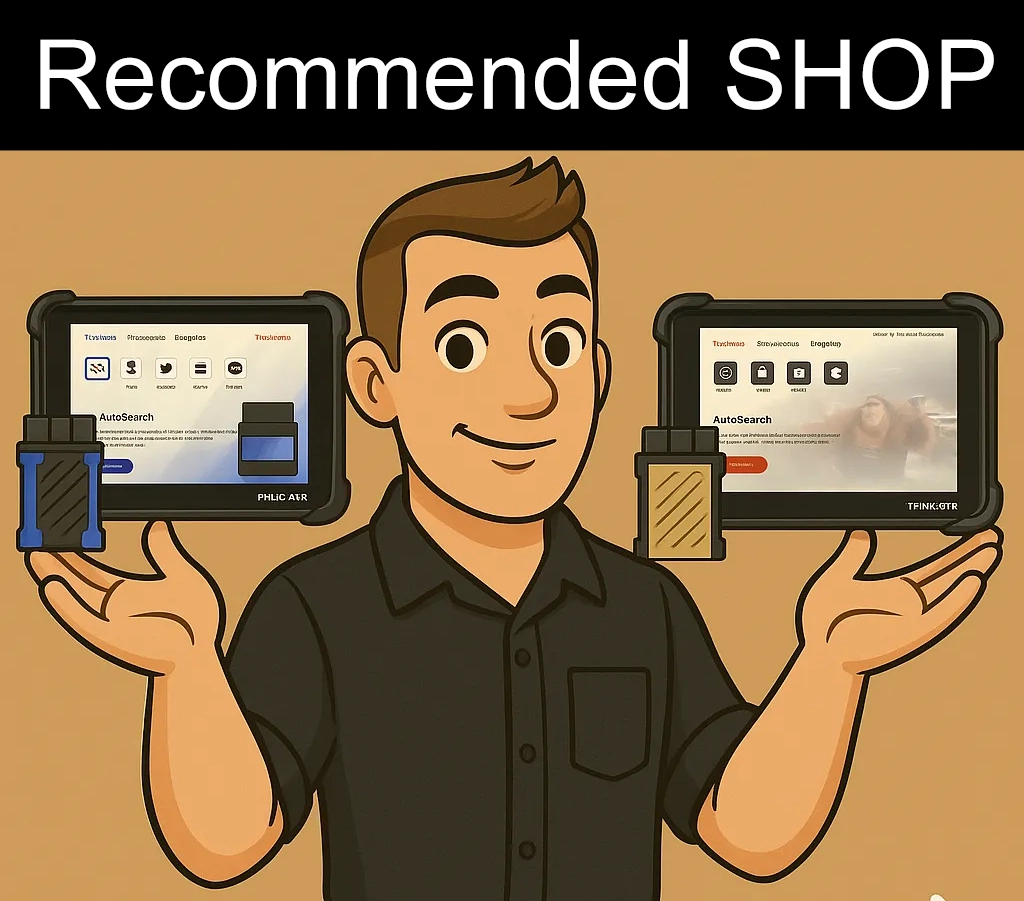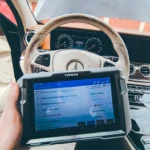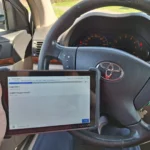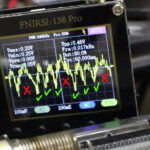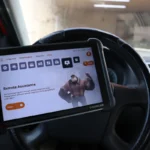P0440 – The EVAP system issue is pointing out a problem in your gasoline vapor capture system. Here is a quick overview to understand codes, and then a case study of solving the P0440 problem on 5 different vehicles to help you with your diagnostic process.
P0440 quick overview
| Meaning | Evap System Code |
| Is it serious? | Moderate, indicates an issue in the evaporative emission control system. |
| Possible causes | – Broken evap tube. – Malfunctioning vent solenoid. – Restrictions in the tube to the tank. |
| How to diagnose? | – Inspect the evap system components for damage. – Check if the hoses in the EVAP system are connected. – Check vent solenoid and evap tube. – Clear codes and monitor for recurrence. – Use a smoke machine to detect leaks |
| What is EVAP? | The Evaporative Emission Control System (EVAP) is a crucial part of your car’s emission control, preventing fuel vapors from escaping into the air and contributing to pollution. This system includes key components like: Gas Tank: Stores fuel. Charcoal Canister: Acts as a vapor trap. Valves: Open and close to control vapor flow. Hoses: Connect components for vapor movement. Sensors: Keep track of the system’s status. During operation, stored vapors are sent back to the engine to burn, reducing emissions. If there’s a leak or malfunction, it triggers warning codes like P0455, indicating potential issues with this emission-control setup. |
EVAP solenoid is one of the most common issues when it comes to EVAP fault codes, but you probably don’t know what that is if you are a beginner in engine diagnosing.
Free PDF: How to choose OBD2 scanner

I’ve made you a free PDF to choose the OBD2 scanner in 5 minutes.





PDF is 100% free and it is designed to help you pick a scanner in less than a few minutes! Not a boring 50-page guide.
Just tell me where to send it.
How to fix p0440 – learn from mechanics
I looked into P0440 service cases at iatn.com website where in the private forums the mechanics seek advice from other mechanics. I looked up a bunch of cases to help you decide how to fix your issue and see what would a real mechanic do to solve it.
Case #1: Pontiac
Vehicle Information:
1996 Pontiac Grand Am SE
Engine: 2.4L
Issue + Repair History:
- The MIL lamp was on, showing code P0440a (Evap system failure).
- An evap tube was broken by a frayed belt and was replaced.
- The code was cleared, and a test drive showed no light until a restart.
- The code resets during KOEO (Key On, Engine Off).
- Replaced the evap purge solenoid, evap vent solenoid, tank pressure sensor, and carbon canister.
- Previous fixes didn’t prevent the code recurrence.
Suggestions from the Community:
- Disconnect the battery and touch terminals together for one minute to truly erase the code.
- Alternatively, disconnect the battery for one hour.
- Verify the correct vacuum lines on the solenoid; they might be reversed.
- Try a new fuel cap and then replace the evap solenoid.
Final Fix:
Disconnecting the battery and touching the terminals together for one minute resolved the issue. Previous scan tool attempts did not prevent the code recurrence.
Case #2: Chevrolet
Vehicle Information:
1997 Chevrolet Lumina
Engine: 3.1L
Issue + Repair History:
- The MIL lamp was on, showing codes P0440 and P1675 (Evap system codes).
- The MIL light was cleared but returned after 10-15 miles.
- Limited experience with domestic vehicles led to seeking advice on P0440 and P1675 codes.
Suggestions from the Community:
- Replace the canister vent valve.
- Repair wires to the valve.
- Replace the canister.
Final Fix:
Replacing the canister vent valve, repairing wires, and replacing the canister resolved the issue. The car has not returned with the same problem.
Case #3: Volvo
Vehicle Information:
1996 Volvo 850 Turbo
Engine: 2.3L
Issue + Repair History:
- The engine pinged on half-throttle acceleration.
- O2 volts ranged from 0.8 to 1.5V.
- Fuel trim showed -10% ST and -15% LT.
- Code P0440 (Evap control system problem) was present.
- The EVAP purge valve was intermittently sticking open.
- A small leak was found at the fuel tank sending unit with a loose threaded retaining ring.
- O2 ground was offset by 0.75V from the battery ground.
- Code P0440 was inhibiting fuel trim, causing code P0172 (System too rich bank #1).
- Replaced the EVAP purge valve and repaired wires to the valve.
- Replaced the fuel tank sending unit and tightened the retaining ring.
Suggestions from the Community:
- Check for large air leaks in the evaporative system, which could lean out one cylinder and cause pinging.
- The evaporative system is at maximum flow at half throttle; a large air leak could allow air into the intake system.
- Verify fuel trim inhibition due to code P0440; possible sources include a clogged evap canister, clogged evap lines, or a defective evap valve.
- Install an inline fuel filter between the evap canister and the valve to prevent charcoal contamination.
Final Fix:
Replacing the EVAP purge valve, repairing wires, and addressing the fuel tank leak resolved the pinging issue and rich fuel trim. An inline filter was installed to prevent future charcoal contamination. The car no longer pings on acceleration, and codes P0440 and P0172 were cleared.
Case #4: Land Rover
Vehicle Information:
1999 Land Rover Discovery Series II
Engine: 4.0L
Issue + Repair History:
- The vehicle failed the state E-test due to current DTCs: P0440 and P1596.
- Limited information was available in AllData and the Land Rover manual on specific DTCs.
- Checked basics: no obvious large leaks, and the vehicle had an aftermarket gas cap.
- Codes reset every 2-3 days.
Suggestions from the Community:
- P0440: Evaporative control system fault, possibly due to a purge valve not sealing. Check for a stuck open purge valve.
- P1590: Rough road signal fault, used for misfire detection, may be related to ABS, sometimes an erroneous fault.
Final Fix:
P0440 was traced to a purge valve fault, which was found to be not sealing. P1590 was a rough road signal fault (misfire detection) from ABS; it did not reset after the evap repair and complete drive cycle. With all monitors ran and no DTCs, the vehicle passed the IL E-test.
Case #5: BMW
Vehicle Information:
2001 BMW X5
Engine: 4.4i
Issue + Repair History:
- P0440 Evap code was detected.
- Smoke tested the system while using a scanner to close the solenoid valve in the DTML; no leaks were found.
- A previous code P0443 (purge valve circuit) led to the replacement of the tank vent valve (purge valve).
- The new code P0440 persisted after replacing the purge valve.
Suggestions from the Community:
- Check if the new purge valve is sealing properly; pressurize the system via the disconnected purge-valve line and see if it holds pressure.
- Use a BMW purge valve, as non-OEM parts may not seal properly.
- Consider replacing the DMTL pump (leak detection pump) as it is a common source of issues.
- Verify the electrical connector under the seat for the fuel pump; it may burn up and cause a minuscule evap leak.
Final Fix:
A human error was discovered; the purge valve was not fully snapped onto the tank vent line. Reseating the purge valve properly resolved the issue. No further codes were reported after the correction.
Free PDF: How to choose OBD2 scanner

I’ve made you a free PDF to choose the OBD2 scanner in 5 minutes.





PDF is 100% free and it is designed to help you pick a scanner in less than a few minutes! Not a boring 50-page guide.
Just tell me where to send it.

